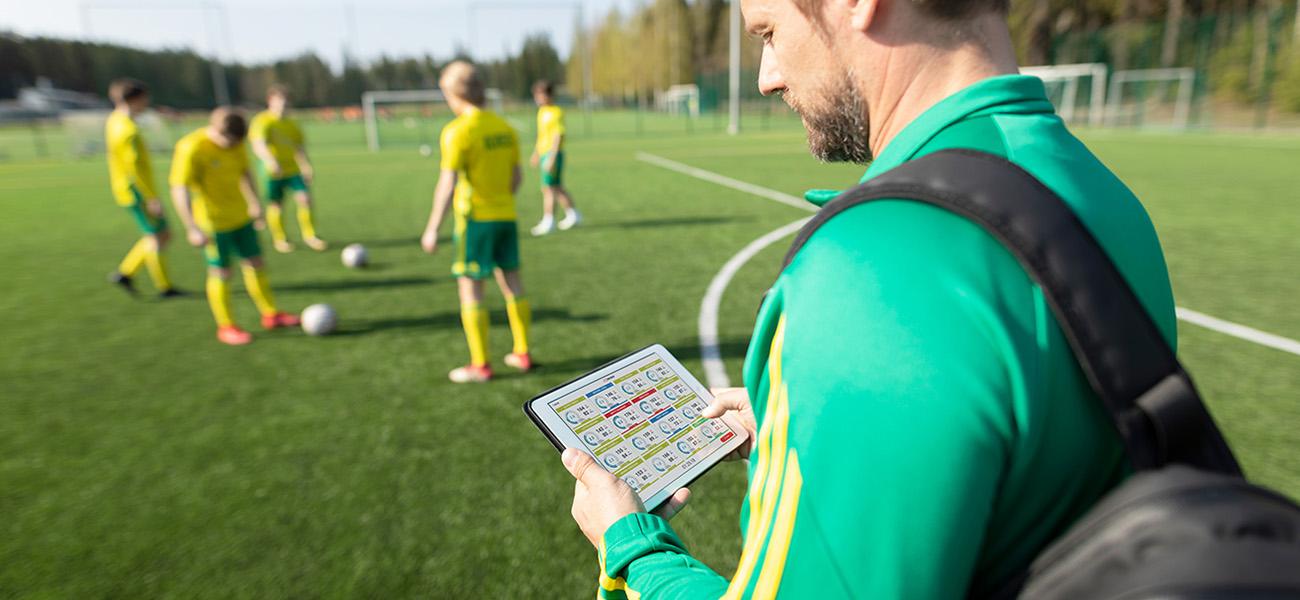
The end goal of any training plan is to make sure athletes are ready to perform at the peak of their abilities come game day. A big part of this is making sure individuals – and the squad as a whole – are being worked at the appropriate level without risking injury through overtraining.
Monitoring the internal load of athletes during training is an effective way of doing just that. Real-time monitoring offers insights that inform decisions like adjusting the intensity and layout of the ongoing practice to make sure predetermined targets are met. Real-time feedback is also a great tool to inform players about their effort, motivate individuals, and turn findings into immediate actions.
With Firstbeat Sports, you can monitor intensity and watch a variety of training load metrics such as TRIMP, TRIMP/min and Training Effect accumulate in real time.
Internal Load Drives Training Outcome
The Firstbeat Sports’ method for tracking training loads and recovery is built on an advanced analysis of heart rate and heart rate variability data. Better insight means better decisions. Getting results in sports is increasingly decided by ever-decreasing margins, so being able to see accurate, personalized and usable training load data is one way to ensure you stay ahead of the pack.
Track Training Intensity
Are athletes reaching the desired intensities during high-intensity drills? Is an ‘easy’ training session having the desired effect on an individual athlete, or is it pushing them harder than anticipated?
Firstbeat Sports uses a customizable color-coding system to show how hard each individual is being worked at any given moment. The zones can be defined more precisely for each individual athlete in Firstbeat Sports’ team management environment, allowing…
- To identify whether you need to adjust a training session for an athlete, either up or down.
- To establish individual training norms and track an athlete’s physiological reaction to similar drills over time.
- To adjust individual training intensity if training load data indicates that an athlete is becoming increasingly at risk of injury.
- To manage return-to-play scenarios by applying the right loads at the right times to get an athlete back up to game speed quickly and safely.
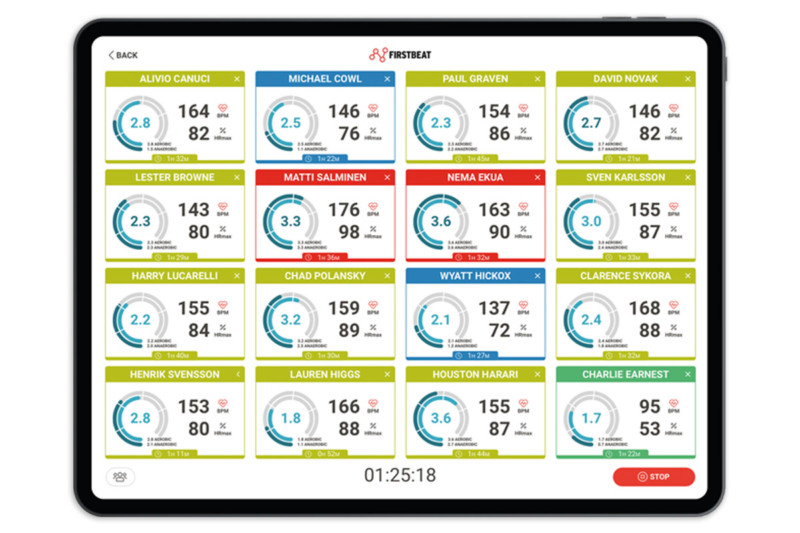
Firstbeat Sports: Coach app
Receive Recovery Insights
Tracking an athlete for an entire session allows you to see how quickly their heart rate slows during a planned break in the session. This provides a good indication of an athlete’s ability to recover and lets you easily compare how differently they respond to the load placed upon them. It also lets you see if built-in recovery breaks are the correct length.
Context is Key
Data in an isolated drill/session must be appreciated in the context of a wider workload and the previous data collected so that an effective and appropriate decision can be made.
During training: When a training session has been planned, you want to make sure it is giving as big an advantage as possible to the athletes for game day. Monitoring Training Effect in real time allows you to do this.
Firstbeat Sports’ Training Effect algorithm lets you track which physiological performance characteristics, and to what extent, have been trained, i.e. aerobic and anaerobic Training Effects. Having access to individual Training Effect scores lets you see whether an athlete has been pushed enough so that he/she will benefit and improve their fitness moving forward.
During pre-game workouts: Use real-time feedback to ensure your pre-game workouts are at the right intensity to deliver your players into gameday feeling fresh and ready to perform.
Start Conversations and Motivate
By inviting athletes to view their data at certain times, it can motivate them to kick on and improve training standards. Athletes, by their nature, are competitive. When it is appropriate, showing their data in comparison to teammates plays on this and can increase motivation. Firstbeat Sports additionally offers tools to increase buy-in and make your athletes part of the data collection process, so they can support and optimize their own performance.
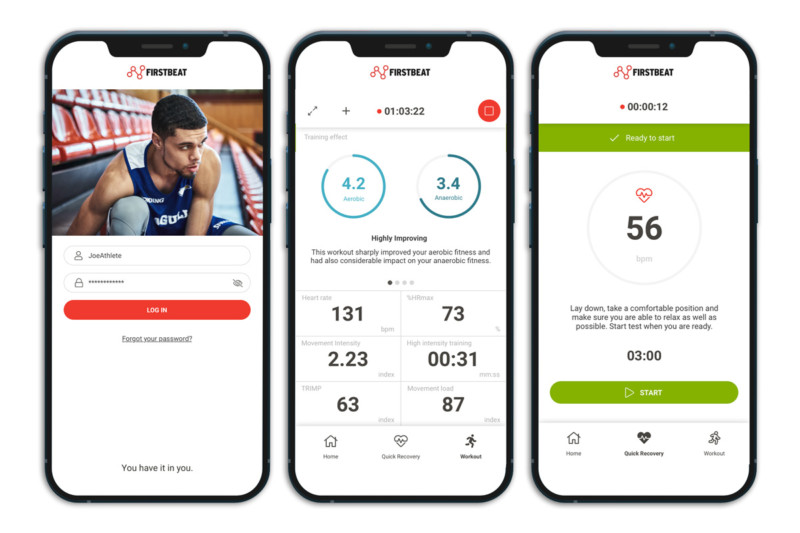
Firstbeat Sports: Athlete app
If you liked this article, you should subscribe to our mailing list.
You might also be interested in
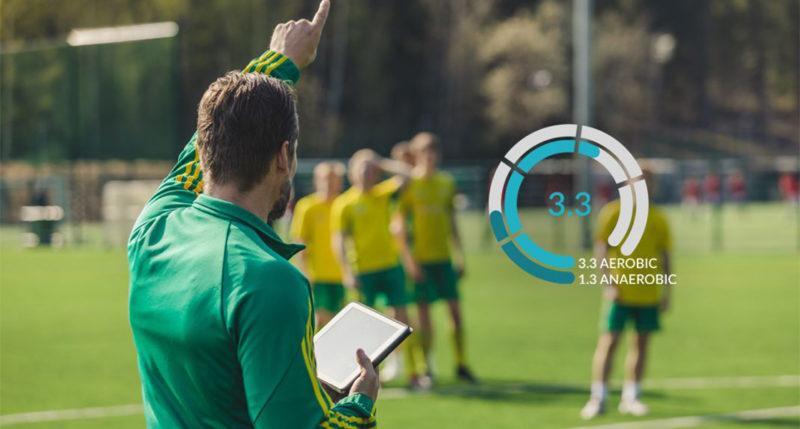
How to Use Training Effect: The Firstbeat Sports Feature that Measures the Impact of Training
In this article, we look at how Training Effect is calculated, the Training Effect scale, and how it is visualized in Firstbeat Sports.
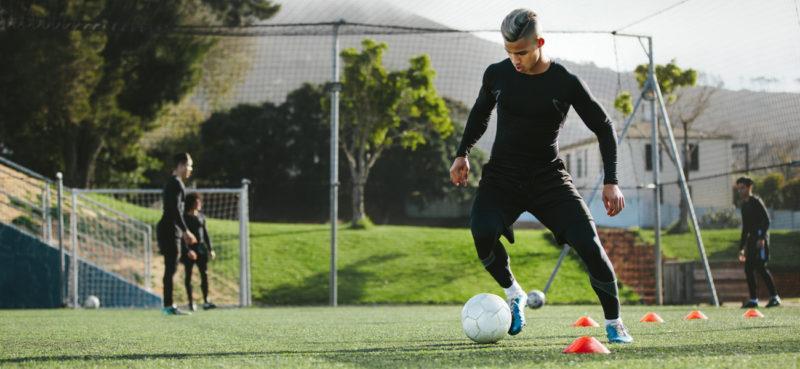
Why Monitor Internal Load in Elite Sports?
A look at the what, how and why of internal load monitoring and why it should form part of your training program.

